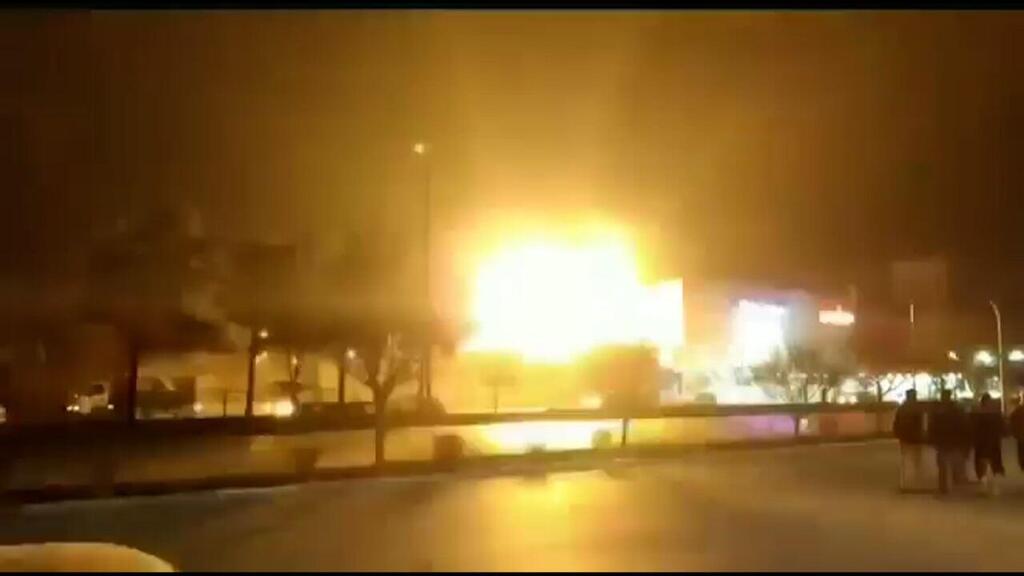Getting your Trinity Audio player ready...
Saudi media reported on Tuesday that at least one person was killed in a blast in the central Iranian city of Isfahan, just three days after the massive explosion at the Shahid Rajaee Port, killed 70 people and injured more than 1,000.
The Saudi channel "Al-Hadath" reported that the site of the explosion was a chemical industrial complex connected to gunpowder production and overseen by Iran's National Security Council. A similar report was published by "Iran International," a Persian-language opposition news outlet based in London. According to this report, the company called "Ava Nar Parsian," specializes in the production of "combustible materials" and is under the supervision of the Iranian National Security Council. The company’s website says that it manufactures fireworks and dynamite.
"Iran International" further reported that the company’s managers are tied to another company involved in drone production, whose factory—also located in the Isfahan province—experienced an explosion in June 2021. The Guardian previously reported that Iran’s Aerospace Industries Corporation, which manufactures various types of drones, operates within the same complex.
Although the circumstances of this latest incident remain unclear and it may well be a simple accident, the explosion comes shortly after the massive blast at the Shahid Rajaee Port in Bandar Abbas. The cause of that explosion remains unclear more than three days later. Iran's official stance is that it resulted from "negligence" related to how chemical materials were stored at the port. However, various sources in Iran have also raised the possibility of sabotage. Reports and assessments suggest that the explosion was linked to the ignition of chemicals Iran had received from China for the production of solid fuel for ballistic missiles.
Blast at Shaid Rajaee Port
The explosion at Shahid Rajaee Port occurred on Saturday, and more than two days later, the fire at the port was still burning, though authorities now appear to have gained control of the flames. The explosion caused extensive damage to structures at the Shahid Rajaee Port, Iran’s largest commercial port, and reports indicated that the shockwave caused damage within a radius of several kilometers. Footage from the moment of the explosion shows orange smoke rising before a massive fireball suddenly expands in the sky, followed by a giant mushroom cloud.
Get the Ynetnews app on your smartphone: Google Play: https://bit.ly/4eJ37pE | Apple App Store: https://bit.ly/3ZL7iNv
According to reports, the Shahid Rajaee Port had received shipments of sodium perchlorate from China in recent months, a critical component in the production of solid rocket fuel for Iran’s ballistic missiles. A source reportedly connected to the Iranian Revolutionary Guard confirmed to the New York Times that this material ignited and caused the explosion. However, the Iranian Defense Ministry claimed that no "military material" was stored at the port. "The reports published by foreign media on the matter are part of the enemy's psychological operation," the ministry stated.
The disaster at Shahid Rajaee Port coincided with the third round of nuclear negotiations between the United States and Iran, prompting speculation about whether the explosion was a deliberate act of sabotage aimed at undermining the talks. However, there is currently no evidence to support this theory, and an Israeli official has denied any involvement. It is highly likely that the explosion was indeed caused by negligence: Iran has a history of accidents stemming from neglected infrastructure, which it struggles to repair due to the severe impact of American sanctions on its economy as well as poor and corrupt management.





